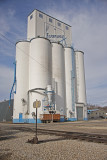

We use Google reCaptcha to protect our website and the Google Privacy Policy and Terms of Service apply. For more information see our Privacy Policy. Privacy Notice: Newsletters may contain info about charities, online ads, and content funded by outside parties. Instead, it is likely it was added to the ash and aggregates first, before water was added.

The researchers say this suggests the quicklime was not mixed with water before it was added to the other ingredients. The team found the clasts were porous with cracks, which also suggested they were formed in a high temperature, low water environment. They examined a sample of Roman concrete from a wall in the ancient city of Privernum near Rome, revealing that the lime clasts within it contain different forms of calcium carbonate, some of which tend to arise in conditions where water is not freely available. While these have previously been explained as arising from poor mixing of the mortar or other errors, the team suspected there could be other reasons. Writing in the journal Science Advances, Masic and colleagues note that samples of Roman concrete contain small lumps known as lime clasts that are not found in modern structures. Now researchers say it appears techniques used to prepare Roman concrete might also help explain why it has stood the test of time. Roman concrete was produced using lumps of volcanic rock and other aggregates held together with a mortar made with ingredients including a pozzolan (such as volcanic ash), a lime source (calcium oxide) and water.Īmong previous explanations for the strength of the material, researchers have revealed that concrete from Roman breakwaters and piers contain the minerals aluminous tobermorite and phillipsite that helped to reinforce to concrete. “They knew that was a great material, but they probably didn’t know that it would last thousands of years,” said Masic. “The Pantheon would not exist without the concrete as it was in the Roman time,” said Admir Masic, MIT professor of civil and environmental engineering and the lead author of the paper.īut, he added, despite the Roman author and philosopher Pliny the Elder noting that concrete could become stronger with age, it is unlikely the Romans were aware of the chemistry involved – or just how long the material would endure.


 0 kommentar(er)
0 kommentar(er)
